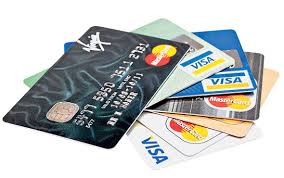8 things I learned from the one rand experiment.
- Aug, 09, 2015
- Adrienne
- Budgeting, household management
- No Comments.
While researching the budget section of my blog, I came across the R1 family, a social experiment together with Sanlam.
When I spoke to my mom and editor, she remembered that in 2014 Sanlam ran the R1 man experiment for the first time.
I watched the R1 man (name unknown) and the R1 family or S’bu, Londiwe and kids. It was an eye opener and I learned so much from this experiment. I had already changed my money habits but this got me thinking about more than spending money but also about the psychology of money.
- Car and home repayments are our biggest expenses. People often buy their car, or house, as a way of showing how well they are doing. This makes them buy a top of the range car when they only need a middle of the range model. They buy houses at the maximum repayment for which they qualify. So if they qualify for a R500 000 bond, they buy a house for that amount when they can get a house big enough in a less affluent area. For observant Jews the areas are a little more difficult as not using a car on Sabbath means that you have to find a house near a Synagogue and, unfortunately, or fortunately, these homes are usually in more upmarket areas.
- South Africans view a pension contribution as an expense not an investment. If your employer pays contributions to a pension fund, request that your contribution is the maximum option. It is for your future.
- If you don’t use a shopping list when grocery shopping, you shop using your emotions. Always make a grocery list and never shop on an empty stomach. If you shop without a list, you wander up and down the aisles and take things off the shelf that you want, or feel like, and not what you need

- Always round up not down. I didn’t know that people round down! Remember R1.99 is R2 not R1!
- Using your credit card, an average item that is marked R20 actually costs you about R24. Banks charge interest on credit cards, as do 12 month credit store cards! So if you use a store card that offers 6 or 12 months, always go with the 6 months as this is usually interest free.
- Save first, spend later. Decide how much you want to put away for saving and do that before you spend any money. R100 a month into a savings account is a good minimum but you can choose your own amount.
- Our spending habits/psychology is established by age 7. Kids learn by watching. If they see you buying indiscriminately, they will do the same. If you don’t look after your things they won’t either.
- South Africans spend 76% of their income on servicing debts. Try to pay off your debt and not create more. This, I think, is one of my families’ most difficult challenges as it is for a lot of families. Clothing store debt! The kids keep growing and they need clothes so, just as you think you can pay it off, the next season arrives and last seasons clothes no longer fit!
Do you know where your money is going every month? How much debt are you in? Do you think you could live on your money, with no credit, no internet banking, strictly cash for a month?
Search:
Categories
- accident prevention
- App reviews
- babies in cars
- Books
- Braai
- Bread Recipes
- budget gifts
- Budgeting
- Budgeting in South Africa
- calendar
- Celebrations
- Cellphone safety
- Chanuakah
- Chicken recipes
- Child safety
- Children
- Chrismukah
- Christmas gifts
- Daily budgeting for South Africans
- Debt
- distracted driving
- driver safety
- drowning
- Environmental Issues
- Family
- Family Calendar
- Finance
- food
- Food for toddlers
- Food Myths
- Freedom Day
- frugal gifts
- grocery shopping
- Health
- heat exhaustion
- Heat wave
- Heritage Day
- household management
- I -Plan
- I-cook
- Jewish food
- JOFR
- Johannesburg
- Kosher
- Lockdown
- Managing your household
- Meal Planning
- Meat Recipes
- monthly shopping
- Nurses Day
- Obesity
- online shopping
- Organisation and clean up
- Parenting
- personal finance
- Personal safety
- pets in cars
- Public Holidays
- Quick meals
- Random Ruminating
- Recipes
- Religious holidays
- Reviews
- saving money
- School
- slow cooker
- Slow cooker recipes
- Soup
- South African
- Specifically Jewish
- Summer
- Teenagers
- textbooks
- texting
- Tu B Av
- Uncategorized
- Vegetarian Recipes
- Winter
- Workers Day
- workshop
- Xmas gifts
Archives
- September 2025
- May 2025
- November 2023
- October 2022
- August 2021
- February 2021
- January 2021
- November 2020
- September 2020
- August 2020
- June 2020
- May 2020
- April 2020
- March 2020
- February 2020
- January 2020
- November 2019
- October 2019
- September 2019
- August 2019
- May 2019
- April 2019
- February 2019
- January 2019
- November 2018
- October 2018
- September 2018
- May 2018
- April 2018
- March 2018
- February 2018
- January 2018
- August 2017
- May 2017
- April 2017
- March 2017
- February 2017
- January 2017
- December 2016
- October 2016
- September 2016
- August 2016
- July 2016
- May 2016
- April 2016
- March 2016
- February 2016
- January 2016
- December 2015
- November 2015
- October 2015
- September 2015
- August 2015
- July 2015
- June 2015





Leave a Reply